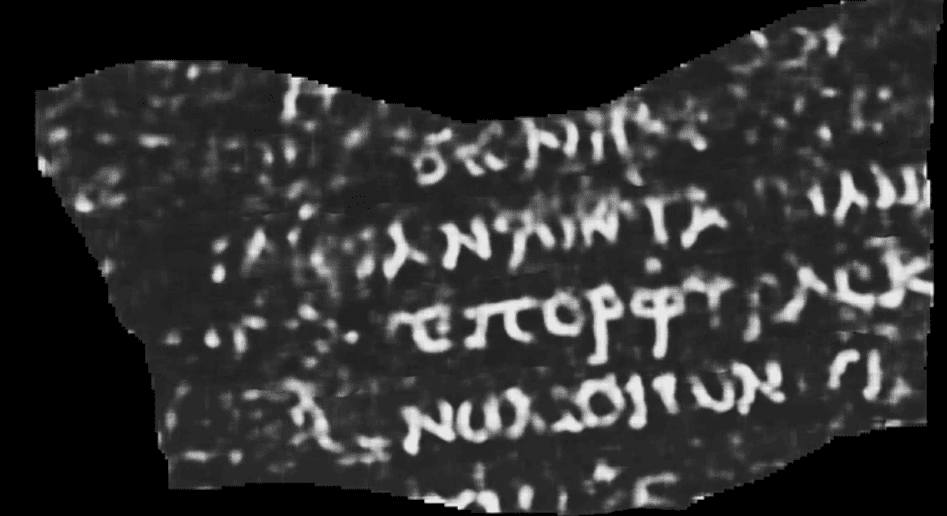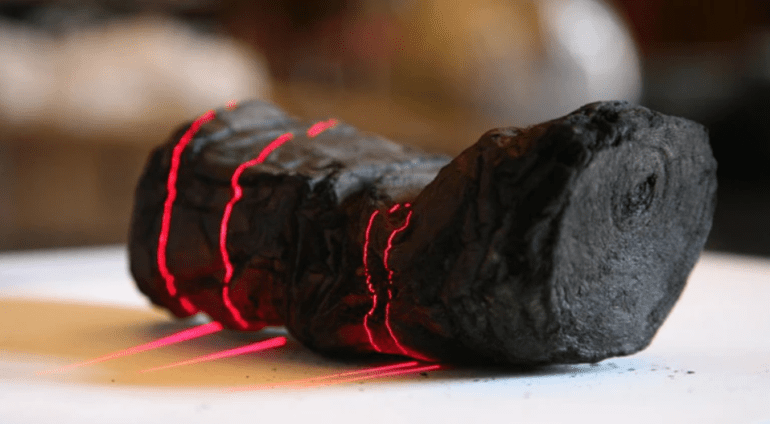TL;DR:
- A 21-year-old computer science student, Luke Farritor, wins a global contest to read a previously unreadable carbonized scroll from Herculaneum, buried by the eruption of Mount Vesuvius in AD 79.
- Farritor’s machine-learning algorithm detects Greek letters, offering hope for uncovering more texts from the only intact Greco-Roman library.
- The Vesuvius Challenge awards Farritor $40,000 for reading over 10 characters in a small area of the scroll.
- The discovery could revolutionize our understanding of ancient history and literature, as these texts are direct from the original authors.
- Previously, scholars could only study fragmented scrolls, but now there is potential to recover entire texts.
- Artificial intelligence is playing an increasing role in the study of ancient texts, opening doors to deciphering unseen writings.
- The deadline for the Vesuvius Challenge’s grand prize is December 31st, and optimism abounds for more revelations.
Main AI News:
In a remarkable breakthrough, a 21-year-old computer science student, Luke Farritor, from the University of Nebraska–Lincoln, has triumphed in a global competition to unveil the long-hidden contents of a carbonized scroll from Herculaneum, an ancient Roman city tragically preserved by the eruption of Mount Vesuvius in AD 79, the same cataclysmic event that famously buried Pompeii. This achievement may well herald the resurrection of countless texts from the sole surviving Greco-Roman library.
Farritor devised a sophisticated machine-learning algorithm that successfully identified Greek letters etched onto several lines of tightly rolled papyrus. His method, employing subtle variations in surface texture, trained a neural network to highlight the hidden ink.
“When I saw the first image, I was shocked,” said Federica Nicolardi, a papyrologist from the University of Naples, who is a member of the academic committee responsible for reviewing Farritor’s findings. “It was such a dream,” she added, reflecting the excitement shared by the academic community. “Now, I can actually see something from the inside of a scroll.”
The Vesuvius Challenge, an initiative offering various awards culminating in a grand prize of $700,000 for deciphering four or more passages from a rolled-up scroll, celebrated Farritor’s achievement with the ‘first letters’ prize of $40,000. He managed to read more than 10 characters within a 4-square-centimeter area of the ancient papyrus. Youssef Nader, a graduate student from the Free University of Berlin, secured second place with a $10,000 award.
The implications of this revelation are profound. The scrolls, discovered in the 18th century within the remains of a luxurious villa that may have belonged to Julius Caesar’s father-in-law, could transform our understanding of ancient history and literature. Unlike most classical texts, which have been handed down through generations of scribes, the Herculaneum library contains works that are entirely unique, directly from the authors themselves.
Until now, researchers have only been able to study fragmented scrolls. Some Latin works were identified, but the majority consisted of Greek texts associated with the Epicurean school of philosophy, featuring sections of “On Nature” by Epicurus and works by the relatively obscure philosopher Philodemus, covering topics such as vices, music, rhetoric, and death. Speculation suggests that this library may have belonged to Philodemus himself. However, over 600 scrolls, primarily held in the National Library in Naples, with a few scattered in the United Kingdom and France, remain intact and unopened. Furthermore, more papyri could lie undiscovered in the unexcavated lower floors of the villa.
The quest to reveal the content of these delicate scrolls had researchers, led by Seales and his team, working for years to develop methods for “virtually unwrapping” these exceptionally thin layers using X-ray computed tomography (CT) scans, which allowed them to visualize the scrolls as flat images. In 2016, they successfully read a charred scroll from En-Gedi in Israel, revealing sections of the Book of Leviticus. However, the challenge was different with the Herculaneum scrolls, which had carbon-based ink with the same density as the papyrus, rendering them invisible on CT scans.
To overcome this hurdle, Seales recognized the potential for CT scans to capture subtle differences in texture that distinguish areas of papyrus coated with ink. He trained an artificial neural network to read letters in X-ray images of opened Herculaneum fragments. In 2019, he took two intact scrolls to the Diamond Light Source, a synchrotron X-ray facility near Oxford, UK, to scan them at the highest resolution yet. This breakthrough led to the Vesuvius Challenge’s launch, which encouraged collaboration and the sharing of findings.
Around 1,500 teams joined forces via the gamer chat platform Discord. The prizes were distributed in stages, and Farritor, who had a lifelong interest in history and taught himself Latin as a child, played a pivotal role. One significant moment occurred in late June when a competitor noticed that ink occasionally became subtly visible as a texture, referred to as ‘crackle,’ in some images. Farritor honed in on this observation, searching for further hints of letters.
In a moment of great anticipation and excitement, while attending a party in August, Farritor received an alert that a fresh segment with a particularly prominent crackle had been released. He connected through his phone and ran his algorithm on the new image. Walking home an hour later, he looked at his phone and saw five letters on the screen. “I was jumping up and down,” Farritor exclaimed. “Oh my goodness, this is actually going to work.” From there, it took just days to refine the model and identify the ten letters required to claim the prize.
This groundbreaking discovery has ignited enthusiasm among papyrologists. While the word “purple” may seem unassuming, it had not previously been deciphered in the opened Herculaneum scrolls. Purple dye, derived from the glands of sea snails, was a valuable commodity in ancient Rome, and its use could signify various aspects, such as color, clothing, or social status. Nevertheless, the primary significance lies in the potential to recover the entire content of a scroll, including its title and author, thus enabling the identification and dating of ancient works.
Yannis Assael, a staff research scientist at Google DeepMind in London, hails the Vesuvius Challenge as “unique and inspirational.” It represents a broader trend in which artificial intelligence (AI) plays an increasingly pivotal role in the study of ancient texts. For instance, Assael and Sommerschield introduced an AI tool called Ithaca, designed to aid scholars in determining the date and origins of unidentified ancient Greek inscriptions while suggesting text to fill gaps. This initiative now fields hundreds of queries weekly, with similar efforts applied to languages ranging from Korean to Akkadian, which was employed in ancient Mesopotamia.
The true aspiration of the scholars behind this endeavor, led by Seales, is to harness machine learning to unlock the “invisible library,” which comprises physically present yet unseen texts. This includes parchment used in medieval book bindings, palimpsests with hidden layers of writing, and cartonnage made from old papyrus scraps, which were used in ancient Egyptian mummy cases and masks.
For now, the spotlight remains firmly on the Vesuvius Challenge, with the deadline for the grand prize set for December 31st. Seales describes the prevailing mood as “unbridled optimism.” Farritor, ever eager, has already applied his models to other segments of the scroll, uncovering many more characters and the tantalizing promise of further revelations to come.

The first word deciphered in the Vesuvius Challenge is the Greek πορφύρας, meaning ‘purple’. Source: UK Photo
Conclusion:
The successful use of AI to reveal hidden text in the Herculaneum scroll represents a significant breakthrough with far-reaching implications. Beyond its historical and academic significance, this development underscores the growing role of AI and machine learning in the analysis of ancient texts. This technology has the potential to reshape the market for historical research tools and methodologies, facilitating more comprehensive and accurate insights into antiquity. As AI continues to advance, we can anticipate further opportunities for uncovering hidden treasures from the past, making this an exciting time for the field of archaeology and historical research.

